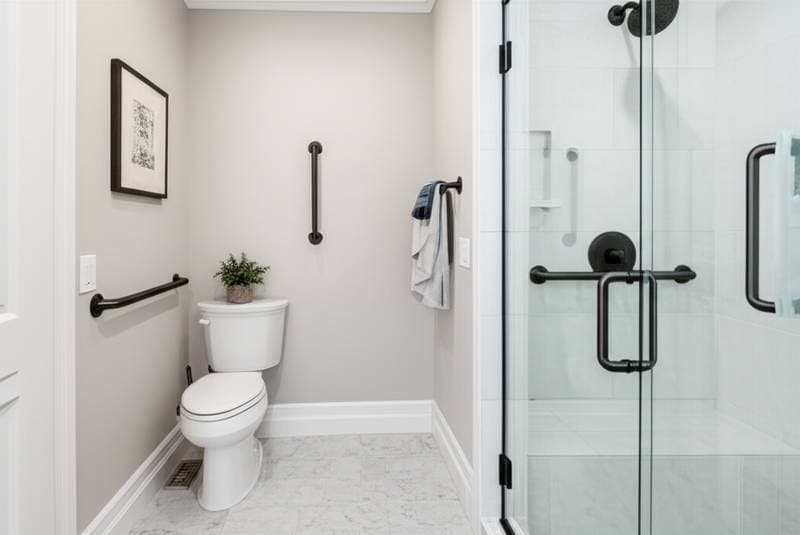DIY vs Professional: Safe Aging-in-Place Home Upgrades
Aging in place allows individuals to maintain independence within their familiar surroundings. Many people notice subtle signs, such as hesitation on stairs or instability in the shower, that signal the need for home modifications. These upgrades enhance safety, comfort, and accessibility without compromising personal style. The key decision involves determining which tasks suit personal skills and when professional involvement ensures compliance and durability.
Home modifications for aging in place vary from simple adjustments to comprehensive renovations. Certain projects offer straightforward do-it-yourself opportunities that deliver quick results. Others demand specialized knowledge to adhere to building standards and avoid potential hazards. A balanced strategy integrates personal efforts with expert guidance for optimal outcomes.
Effective Do-It-Yourself Modifications for Accessibility
Several accessibility enhancements require only basic tools and a weekend of effort. These changes provide immediate benefits at a low cost and minimal complexity.
Install Lever Handles in Place of Doorknobs
Individuals with reduced grip strength or arthritis often struggle with traditional round doorknobs. Lever handles offer easier operation and install in approximately 30 minutes using a screwdriver. Select models made from solid brass or stainless steel, available for $25 to $60 each, to ensure longevity and resistance to wear.
Apply Non-Slip Treatments to Floors
Falls represent a primary risk in wet areas like bathrooms and kitchens. Adhesive non-slip strips, rubber-backed mats, or spray-on coatings provide reliable traction for $10 to $40 per installation site. Prepare surfaces by cleaning thoroughly to remove residue, and plan to inspect and replace these elements every three to six months to sustain effectiveness.
Improve Lighting and Control Accessibility
Adequate illumination reduces the likelihood of trips and eases visual tasks. Replace toggle switches with rocker-style or dimmable versions, priced at about $15 per unit, to accommodate varying needs. Install motion-activated LED night lights in corridors and bathrooms for $10 to $20 each; these activate automatically in low light. For those unfamiliar with electrical work, a professional can complete switch upgrades in under an hour.
Optimize Layout by Rearranging Furnishings
Effective space planning enhances mobility without structural alterations. Clear pathways of at least 36 inches wide by repositioning furniture and removing obstacles. Store everyday essentials at waist to shoulder level to minimize bending or stretching. This no-cost adjustment improves navigation and reduces fatigue during routine activities.
Integrating Do-It-Yourself and Professional Services
A combined method maximizes efficiency and cost savings. Handle aesthetic and minor functional tasks personally, while delegating complex installations to qualified experts. This collaboration often reduces expenses by 30 to 40 percent relative to complete professional oversight.
Consider a bathroom refresh: Select and position ADA-compliant fixtures, apply fresh paint, and lay easy-to-clean tiles independently. Engage a licensed plumber for the installation of a walk-in shower base and drain system to guarantee proper waterproofing and functionality. Such division of labor maintains project control and adheres to regulations.
Seek professionals certified as Aging-in-Place Specialists (CAPS) for tailored guidance. These experts develop customized plans that incorporate self-managed elements. Their involvement ensures designs meet universal accessibility principles while respecting individual preferences and budgets.
Prioritizing Safety Through Compliance and Best Practices
Every modification must prioritize hazard prevention and regulatory adherence. Local codes dictate requirements for structural integrity and accessibility features.
Key guidelines include:
- Select flooring with a coefficient of friction of at least 0.6 in high-risk zones.
- Install grab bars and handrails rated to support 250 pounds or more.
- Locate electrical outlets and switches 15 to 48 inches from the floor.
- Provide a minimum of 32 inches of clear width at doorways.
Consult building authorities or experienced contractors for verification. Many offer brief advisory sessions to confirm DIY plans align with standards, even for partial self-execution.
Fostering Emotional Ties Through Thoughtful Design
These enhancements preserve the home's role as a repository of personal history. Adjustments support continued engagement in cherished activities, such as preparing meals in an adapted kitchen. A subtle front entry ramp maintains curb appeal while welcoming visitors of diverse abilities.
View modifications as investments in sustained well-being. Seamless integration ensures the space reflects ongoing lifestyle needs, promoting confidence and continuity.
Adapting to and Refining Your Upgraded Space
After implementation, allow time for familiarization with new features. Test lever handles, lighting controls, and rearranged areas repeatedly to build comfort. Document operational manuals for technology integrations and train household members on usage.
Observe daily interactions to identify refinements, such as adjusting light sensor positions or adding supplementary supports. Treat accessibility as an ongoing evolution, responsive to changing requirements.
Sustaining Upgrades Through Regular Upkeep
Annual inspections preserve the reliability of modifications. Examine grab bars for secure mounting, verify lighting functionality, and assess flooring for degradation. Replace batteries in automated devices and detectors promptly, and conduct functionality tests on all safety mechanisms.
Develop a comprehensive maintenance schedule that encompasses accessibility and routine care. Address minor issues like hardware tightening or sealant renewal proactively to avert extensive future repairs.
Advancing Toward a Secure and Independent Home
Initiate projects with manageable tasks, guided by practical considerations. Whether wielding tools personally or partnering with specialists, each advancement fortifies autonomy. Evolve your living environment progressively to sustain safety, ease, and a profound sense of belonging.
